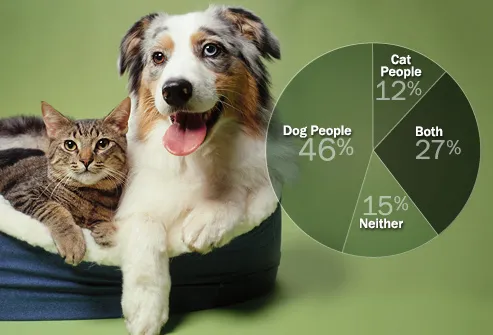It is common for competitive athletes to train at high altitudes because of the decreased amount of oxygen in the air. They believe that it will provide an advantage when returning to sea level. This is why the US Olympic Team has their main training center in Colorado Springs, CO, which has one of the highest altitudes of any major US city. Several different machines have been developed to try to mimic the training in Colorado Springs, but they are unaffordable for most athletes. A newer company, Training Mask, has developed their own product for athletes that is much more affordable (they usually sell for around $100).
In the last few years, these altitude-training masks have become more and more popular. On their website, Training Mask says that, along with making your workout more efficient, it will “increase your stamina and ability to go harder at your sport.” At first glance, it makes sense, but I’ve done some digging and found out that maybe it’s not worth the money. 
An observational study from Texas Tech University analyzed the Training Mask in seven NCAA runners. These subjects took performance tests before and after four-weeks of training using this mask. They essentially failed to reject the null hypothesis that the masks help with stamina and endurance. The subjects had greater respiratory muscle strength, but this only means that they could breathe “harder.” It did not change the maximum amount of oxygen absorbed during running, which is what is actually important when exercising and what increases muscular endurance. The major limitation of this study is the fact that there wasn’t any sort of control group. Researchers at Arizona State fixed the second problem, studying nine cyclists and having a control group. Their results were very similar. A limitation shared by the two studies is small sample size, but I think we can ignore this because the results were so significant and similar. Another possible reason for no increase in endurance during their respective sports is the time frame. Both studies only gave the subjects 3-4 weeks with the masks. What would have happened if they had 10-15 weeks? It would be interesting to see if the results would differ.
I had a hard time finding many credible trials regarding Training Masks. This could be largely due to the file drawer problem. Training Mask’s website shows a few studies supporting their product, but it’s hard to know their credibility due to bias.
Many people misunderstand these altitude-training masks. Yes, they are good for strengthening your respiratory muscles (i.e. how hard you can breathe). This, however, shouldn’t lead to an increase in performance. According to runnersconnect.net, “the main problem isn’t usually getting air into your lungs anyways—it’s getting oxygen from the air into your blood, and then putting that oxygen towards a useful purpose in your leg muscles.” Athletes train at altitude because the air has less oxygen, but these masks do not actually limit the amount of oxygen in the air you inhale. Instead, they just make it harder to breathe. This forces you to “suck” in the air, potentially running the risk of poor breathing habits due to the mask.
Overall, there is no major evidence that supports the use of the training mask for sports; however, there is no evidence showing that it is “bad” to use. Of course, some will train harder because they feel like Bane when wearing it, but for most, it doesn’t seem like it’s worth the money.








 Have you ever felt your melting brain dribble out of your ears after watching a few hours of TV? Didn’t think so. If you said yes, definitely get off your computer and go see a doctor. For the rest of you without liquified brains. I’m sure you’ve heard about some of the negative aspects of watching TV. I know, the Big Bang Theory is super funny but you should really go outside. Humans are not meant to spend most of their time sedentary, that means you! It has long been known that the advent of television has contributed to obesity related diseases. But does it make you dumb? There is some evidence out there that suggests just that! Before you call your mom and tell her that your bad mid term grade was Modern Family’s fault, lets check it out.
Have you ever felt your melting brain dribble out of your ears after watching a few hours of TV? Didn’t think so. If you said yes, definitely get off your computer and go see a doctor. For the rest of you without liquified brains. I’m sure you’ve heard about some of the negative aspects of watching TV. I know, the Big Bang Theory is super funny but you should really go outside. Humans are not meant to spend most of their time sedentary, that means you! It has long been known that the advent of television has contributed to obesity related diseases. But does it make you dumb? There is some evidence out there that suggests just that! Before you call your mom and tell her that your bad mid term grade was Modern Family’s fault, lets check it out.








 Deirdre Barrett is the author of “The Committee of Sleep: How Artists, Scientists and Athletes Use Dreams for Creative Problem-Solving-and How You Can, Too” and did an interview with the Scientific American on dreams. She described the scientific definition of a dream as a “narrative experience that occurs during sleep” (Barrett). She was then asked if it is possible to control our dreams, where she said that yes it is possible. She said it depends on what type of dream: lucid, nightmare, etc. To solve a problem in a dream, one must think of that particular problem before they go to sleep. One could also place something next to their bed that would help remind them of the problem, such as a person he/she is in a fight with. Also important, when one wakes up, they mustn’t get right out of bed. They must lay for a second, and the dream will come back to them. Another interesting thing Barrett spoke about was if someone wants to dream of a particular person or experience. You have to get a picture of who you want to dream about, or a specific line they would say (anything relating to them) or the experience you had.
Deirdre Barrett is the author of “The Committee of Sleep: How Artists, Scientists and Athletes Use Dreams for Creative Problem-Solving-and How You Can, Too” and did an interview with the Scientific American on dreams. She described the scientific definition of a dream as a “narrative experience that occurs during sleep” (Barrett). She was then asked if it is possible to control our dreams, where she said that yes it is possible. She said it depends on what type of dream: lucid, nightmare, etc. To solve a problem in a dream, one must think of that particular problem before they go to sleep. One could also place something next to their bed that would help remind them of the problem, such as a person he/she is in a fight with. Also important, when one wakes up, they mustn’t get right out of bed. They must lay for a second, and the dream will come back to them. Another interesting thing Barrett spoke about was if someone wants to dream of a particular person or experience. You have to get a picture of who you want to dream about, or a specific line they would say (anything relating to them) or the experience you had.













 6 cadets completed calisthenic training three days a week for four weeks. Following the four weeks of calisthenics training there was not enough evidence to fail to reject the hypothesis that calisthenics improves overall fitness levels. There are many factors that may have affected this. One being that ROTC cadets already face intense military training, and the calisthenics may not have been as intense as the training they already receive. Also there was no way to prevent a bias. The cadets may have not taken it seriously and may have not worked as hard as their bodies would allow them too. With the great deal of variables that were not accounted for in this study, it is difficult to use this as an accurate representation of the benefits of
6 cadets completed calisthenic training three days a week for four weeks. Following the four weeks of calisthenics training there was not enough evidence to fail to reject the hypothesis that calisthenics improves overall fitness levels. There are many factors that may have affected this. One being that ROTC cadets already face intense military training, and the calisthenics may not have been as intense as the training they already receive. Also there was no way to prevent a bias. The cadets may have not taken it seriously and may have not worked as hard as their bodies would allow them too. With the great deal of variables that were not accounted for in this study, it is difficult to use this as an accurate representation of the benefits of 





 ink-ease, which were little disposable eye protections for your eyes while tanning. Within the past year or so, I stopped wearing eye protection. I recently went to the eye doctor because my sight has gotten so much worse, and I think it is because of the lack of eye protection when tanning. So, I set to find out.
ink-ease, which were little disposable eye protections for your eyes while tanning. Within the past year or so, I stopped wearing eye protection. I recently went to the eye doctor because my sight has gotten so much worse, and I think it is because of the lack of eye protection when tanning. So, I set to find out. When you think about it, people always wear sunglasses to protect their eyes, so why not wear something when tanning indoors? It is the same idea. According to the
When you think about it, people always wear sunglasses to protect their eyes, so why not wear something when tanning indoors? It is the same idea. According to the 
